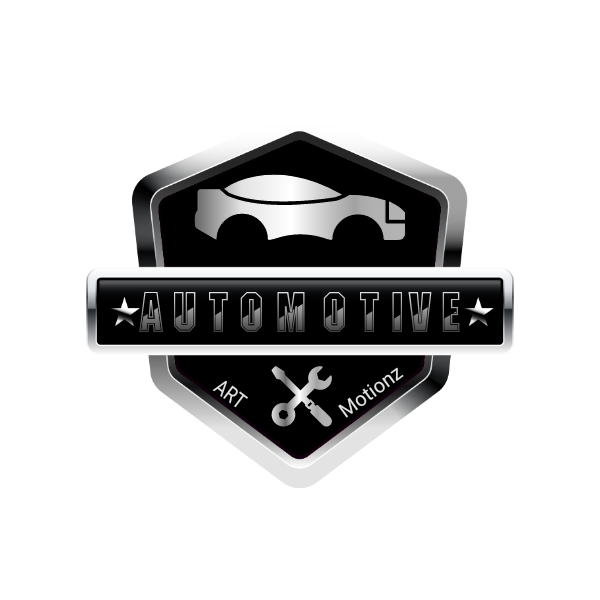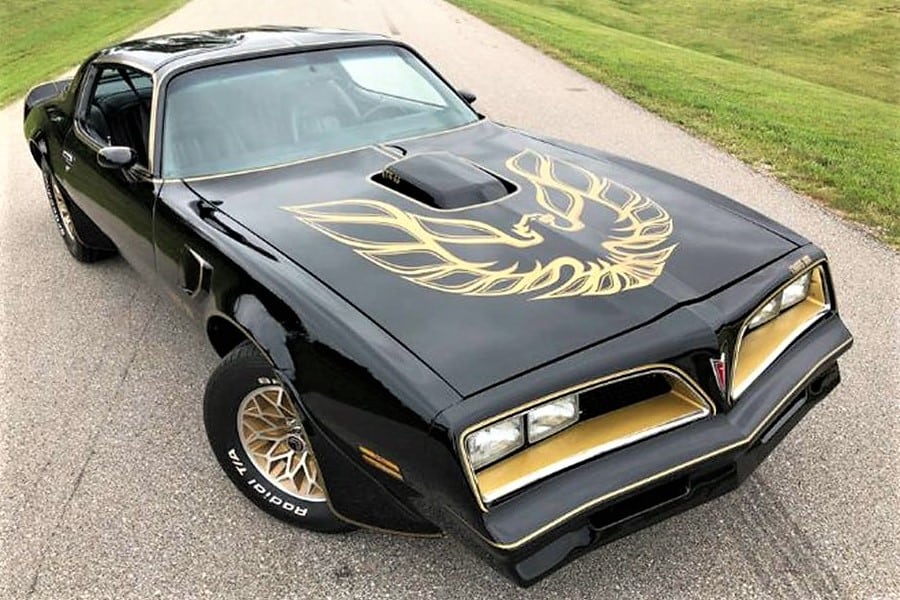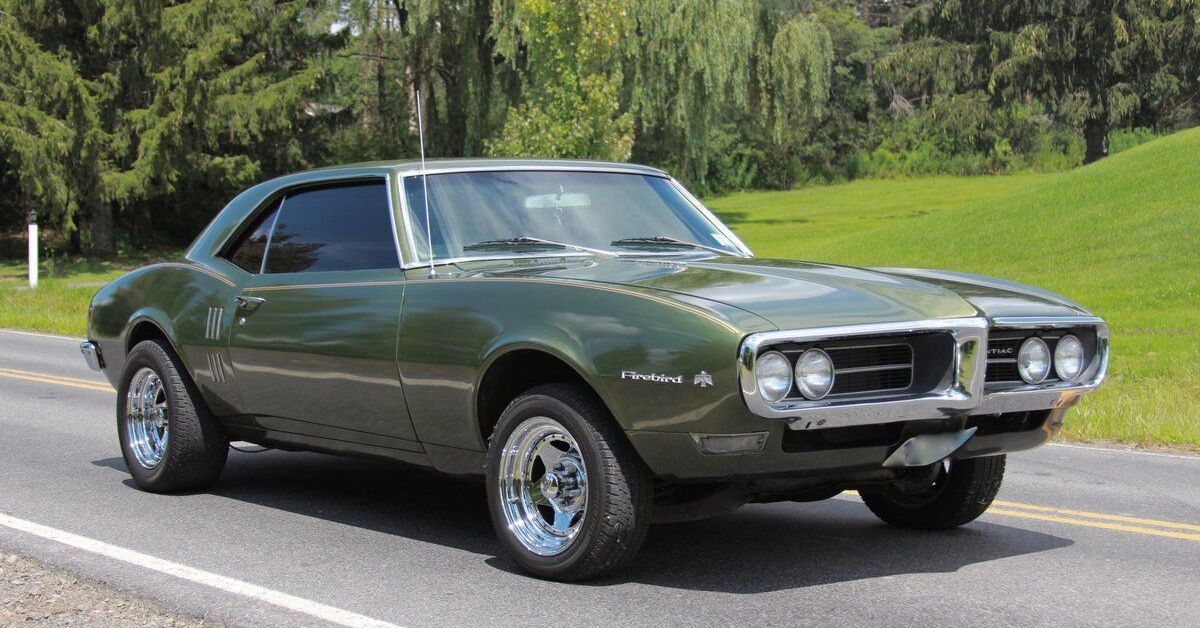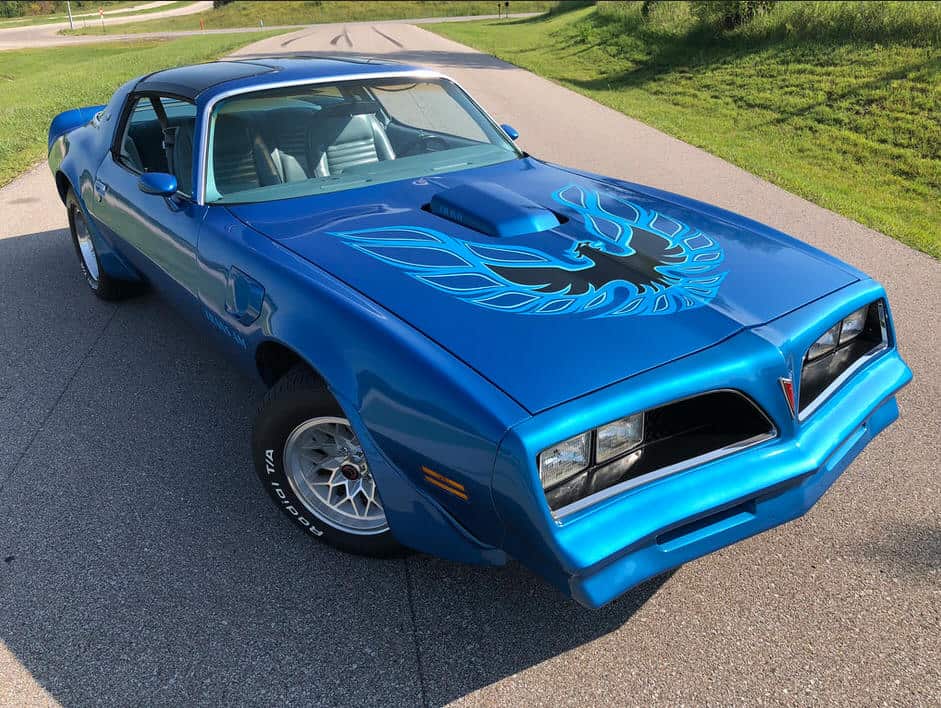Fire and Fury: The Pontiac Firebird Story
The Pontiac Firebird
An American automobile manufactured by Pontiac from 1967 to 2002, was designed as a competitor to the Ford Mustang, sharing the platform with Chevrolet's Camaro. Introduced on February 23, 1967, it coincided with the release of the 1967 Mercury Cougar, Ford's upscale version of the Mustang. The name "Firebird" was previously used by GM for concept cars in the 1950s.
First Generation (1967–1969)
The first-generation Firebird featured a distinct Coke bottle styling similar to the Chevrolet Camaro. Its integrated bumpers and streamlined front end distinguished it from the Camaro. Inspired by the Pontiac GTO and Grand Prix, the rear "slit" taillights added a unique touch. Initially conceived as a two-seat sports car based on the Banshee concept, Pontiac instead shared the F-body platform with Chevrolet to avoid competition with the Corvette. The coupe was priced at $2,666 ($24,361 in 2023 dollars), while the convertible cost $2,903 ($28,519 in 2023 dollars).
The 1967 base model Firebird featured the Pontiac 230 cu in (3.8 L) SOHC inline-six engine, akin to Chevrolet's 230 cu in inline-six but with a one-barrel Rochester carburetor, delivering 165 hp (123 kW). A performance-oriented variant, known as the "Sprint" model, boasted a four-barrel carburetor, elevating power output to 215 hp (160 kW). The lineup also included V8 options: a 326 cu in (5.3 L) with a two-barrel carburetor producing 250 hp (186 kW), a high-output (HO) 326 with a four-barrel carburetor generating 285 hp (213 kW), and a 400 cu in (6.6 L) engine from the GTO, churning out 325 hp (242 kW). Notably, all 1967–1968 400 CI engines were equipped with throttle restrictors limiting secondary carburetor opening.
For the 1968 model year, the 230 cu in engines were enlarged to 250 cubic inches (4.1 liters), with the base version now producing 175 hp (130 kW) using a one-barrel carburetor, while the Sprint version maintained its 215 hp output with a four-barrel carburetor. Additionally, the 326 cu in engine was replaced by a larger 350 cu in (5.7 L) V8, actually displacing 354 cu in, delivering 265 hp (198 kW) with a two-barrel carburetor. An HO version of the 350 cu in V8 with a revised camshaft was also introduced, boasting 320 hp (239 kW).
In 1969, Pontiac introduced the Ram Air IV option for the 400 cu in V8 engines, complementing the existing Ram Air 400. The Ram Air IV was rated at 345 hp (257 kW) and 430 lb⋅ft (583 N⋅m) of torque, with an additional 335 hp (250 kW) respectively. The 350 cu in HO engine saw revisions, resulting in a power output of 325 hp (242 kW). Additionally, a specialized 303 cu in engine was designed for Sports Car Club of America (SCCA) road racing applications.
Modifications for the 1968 model included federally-mandated side marker lights, revisions to the turn signals and rear Pontiac Arrowhead logo, and the introduction of Astro Ventilation. The 1969 model received a significant facelift with a new front-end design, though it lacked the Endura bumper present on the GTO. Interior changes included revisions to the instrument panel and steering wheel, along with the relocation of the ignition switch to the steering column.
Pontiac introduced an optional handling package called the "Trans Am performance and appearance package" in March 1969, priced at $1,083 ($8,998 in 2023 dollars), which included enhancements geared towards the Trans Am Series.
Due to engineering issues delaying the launch of the 1970 Firebird, production of the 1969 models continued into the early months of the 1970 model year. Pontiac removed all model-year references from Firebird literature and promotional materials, anticipating the extended production run of the then-current 1969 models.
Overview:
- Production: February 23, 1967–1969
- Assembly: Lordstown, Ohio (1967–1969); Van Nuys, California (1968–1969); Norwood, Ohio (1969)
- Designer: Jack Humbert
- Body Style: 2-door coupe, 2-door convertible
- Platform: F-body
Powertrain:
- Engine options:
- 230 cu in (3.8 L) Pontiac SOHC I6
- 250 cu in (4.1 L) Pontiac SOHC I6
- 326 cu in (5.3 L) Pontiac V8
- 350 cu in (5.7 L) Pontiac V8
- 400 cu in (6.6 L) Pontiac V8
- Transmission options: 2-speed automatic, 3-speed Turbo-Hydramatic automatic, 3-speed manual, 4-speed manual
Dimensions:
- Wheelbase: 108.1 in (2,746 mm) (1967)
- Length: 188.8 in (4,796 mm) (1967)
- Width: 72.6 in (1,844 mm) (1967)
- Height: 51.5 in (1,308 mm) (1967)
Second Generation (1970–1981)
The second generation of the Pontiac Firebird spanned from 1970 to 1981 and was marked by various notable features and developments.
Styling Evolution:
- The second generation debuted in 1970 with a delay until February 26 due to tooling and engineering issues. It introduced a more streamlined body style, departing from the previous "Coke bottle" design.
- Initially featured a large C-pillar, which was later enlarged in 1975.
- Notable appearance packages and limited editions were offered throughout its production, including the iconic Trans Am models.
Model Lineup:
- Included variants like Firebird, Firebird Esprit, Firebird Formula, and Firebird Trans Am, catering to different tastes and preferences.
1970
- The introduction year saw a wider range of model subtypes and the debut of Firebird Esprit and Firebird Formula.
- Engine options ranged from a 155 hp (116 kW) 250 cu in (4.1 L) inline-six to high-performance V8s like the 455 cu in (7.5 L) Ram Air IV.
1971
- Minor changes included exhaust vent additions to fenders and updated interior options.
- Engine ratings transitioned to SAE Net power ratings, with larger displacement engines like the 455 becoming available.
1972
- Marked by minor alterations, including a hexagonal honeycomb grille insert.
- Engine options remained mostly unchanged, with the LS5 455 HO remaining available.
1973
- Introduced new exterior colors and updated nose bird designs for the Trans Am, showcasing continuous aesthetic refinements.
Throughout its evolution, the second-generation Firebird maintained its iconic status and continued to captivate automotive enthusiasts with its performance and style.
1974
The Pontiac Firebird Formula underwent significant changes, notably due to safety regulations like the 5 mph telescoping bumpers. These alterations increased curb weights, with the SD455 Trans Ams tipping the scales at 3,850 lbs in their inaugural year of production. The 1974 models boasted a redesigned front end and distinctive wide "slotted" taillights. Engine options included the 400, 455, and SD-455 engines for both Trans Am and Formula models. A test conducted on an SD-455 Trans Am in June 1974 showcased its capabilities, clocking 14.25 seconds at 101 mph with a Turbo-Hydramatic 400 3-speed automatic transmission. Notably, the factory-rated 290 hp was achieved at 4,400 rpm.
1975
Saw further refinements, including wraparound rear windows and engine adjustments due to catalytic converter implementation. The LS2 Super Duty engine was no longer available, replaced by the TH350 3-speed automatic. The year also marked the introduction of the "500557" engine blocks, albeit considered weaker due to lower nickel content. The 455 engine returned mid-year, albeit with modifications and rebranded as "455 HO."
1976
Pontiac introduced sleek polyurethane bumpers and revised the interior with larger bucket seats. The L75 455 V8 was discontinued due to emissions regulations. A special 50th-anniversary Trans Am option was unveiled, featuring black paint with gold accents.
1977
Witnessed a facelift with four rectangular headlamps and revisions to the shaker scoop. General Motors began sourcing V8 engines from other divisions, offering more options for Firebird models. The Trans Am featured various engine choices, including Pontiac and Oldsmobile V8s. Notably, the W72 engine option received a power boost, becoming a popular choice.
1978
bBrought slight changes, including a grille design shift and the introduction of the Red Bird package. The Y82 Special Edition Trans Am gained fame from its appearance in "Smokey and the Bandit." The Y88 Special Appearance package showcased an all-gold color scheme and unique features.
1979
Pontiac redesigned the Firebird's body for improved aerodynamics. Engine options included the L80 Oldsmobile 403 and the W72 Pontiac 400. Notably, a limited-edition Tenth Anniversary Trans Am was produced.
1980
Marked significant changes due to emissions regulations, leading to the introduction of smaller engines like the 301 as the standard option. The Turbo Trans Am Pace Car gained attention, and various appearance packages were offered.
1981
Pontiac bid farewell to the second-generation Firebird. Engine options remained similar, with slight revisions. Special editions like the Turbo Trans Am for the Daytona 500 were introduced, marking the end of an era for the iconic Firebird.
Overview:
- Production: Ran from 1970 to 1981.
- Assembly: Done in Van Nuys, California, United States (1970–1971, 1978–1981) and Norwood, Ohio, United States (1970–1981).
- Designer: Bill Porter.
Body and Chassis:
- Body Style: Primarily a 2-door coupe.
- Platform: Built on the F-body platform.
- Related: Linked to the Chevrolet Camaro (second generation).
Powertrain:
- Engine options ranged from a 231 cu in (3.8 L) Buick V6 to a 455 cu in (7.5 L) Pontiac V8.
- Transmission options included 3-speed and 4-speed manuals, as well as 2-speed and 3-speed automatics.
Dimensions (1978):
- **Wheelbase:** 108.2 in (2,748 mm).
- **Length:** 196.8 in (4,999 mm).
- **Width:** 73.4 in (1,864 mm).
- **Height:** 49.3 in (1,252 mm).







